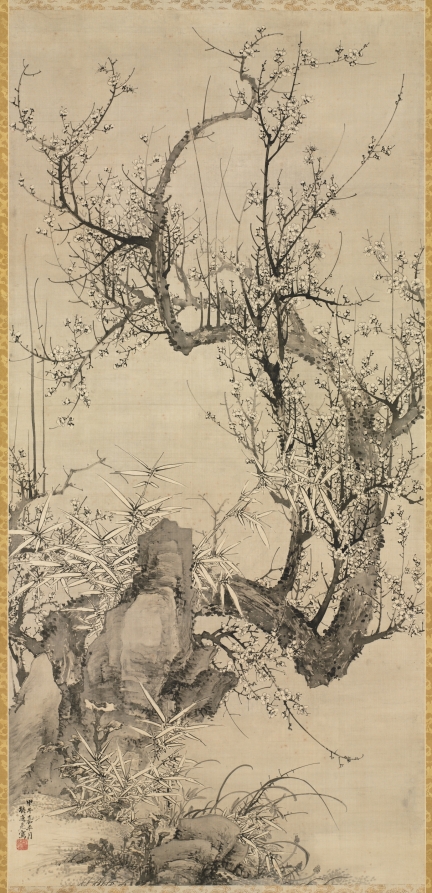| schema:description 11 | "wall_description: In Japan, the literati painter Yamamoto Baiitsu loved the plum and even changed his name to include the word <em>plum</em>. Here he created a dynamic composition to show the energy of the late Edo period. The plum, bamboo, and orchid derive from the motif of the Four Gentlemen, also called the Four Noble Ones or Four Friends. The term compares four plants—the plum blossom, bamboo, orchid, and chrysanthemum—to Confucian scholar-<em>junzi</em>, or "gentlemen." Four Gentlemen also refers to a painting or decoration incorporating all the plants, which are typically depicted in traditional ink paintings....(more)" |
| schema:description | "id: 148382" |
| schema:description | "tombstone: Plums, Bamboo, and Orchid, 1834. Yamamoto Baiitsu (Japanese, 1783-1856). Hanging scroll; ink on silk; painting only: 172.4 x 79 cm (67 7/8 x 31 1/8 in.); including mounting: 252.7 x 105.4 cm (99 1/2 x 41 1/2 in.). The Cleveland Museum of Art, Mr. and Mrs. William H. Marlatt Fund 1975.93...(more)" |
| schema:description | "measurements: Painting only: 172.4 x 79 cm (67 7/8 x 31 1/8 in.); Including mounting: 252.7 x 105.4 cm (99 1/2 x 41 1/2 in.)...(more)" |
| schema:description | "type: Painting" |
| schema:description | "technique: hanging scroll; ink on silk" |
| schema:description | "creditline: Mr. and Mrs. William H. Marlatt Fund" |
| schema:description | "digital_description: This painting represents three of the plants known as the Four Gentlemen of Chinese painting; it lacks only autumn’s chrysanthemum. The plants’ characteristics are symbols of Confucian virtues, such as open-mindedness (bamboo), strength in the face of adversity (plum), and humility (orchid)....(more)" |
| schema:description | "inscription: date and signature at lower left." |
| schema:description | "culture: Japan, Edo period (1615-1868)" |
| schema:description | "collection: ASIAN - Hanging scroll" |

